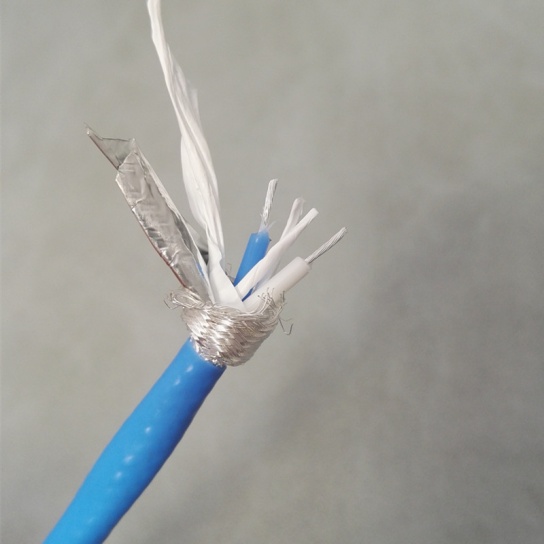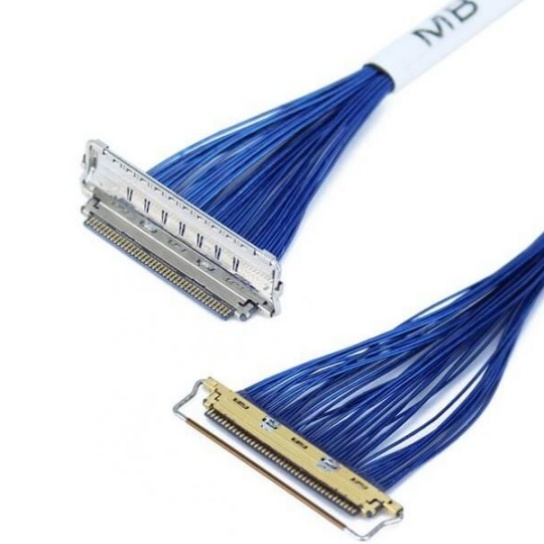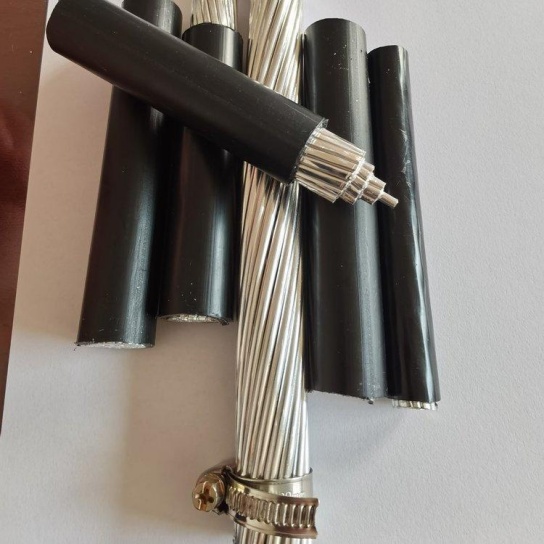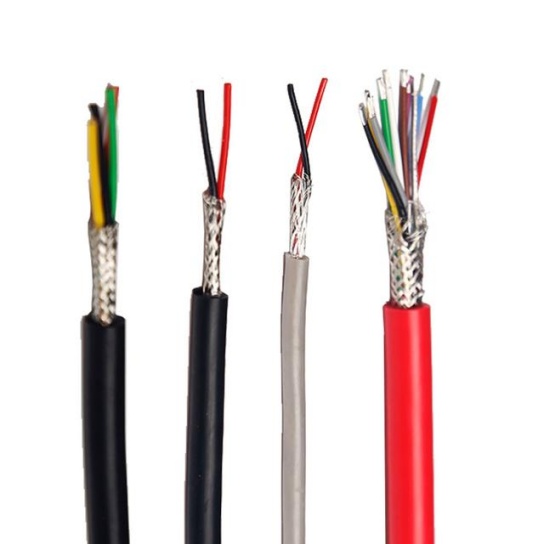Aircraft Cable Assemblies: Ensuring Safety in Emergency Systems
In the aviation industry, safety is not just a priority—it is the foundation upon which every flight operates. From takeoff to landing, countless components work in harmony to protect passengers, crew, and aircraft. Among these critical components, emergency systems stand as the last line of defense when unexpected situations arise, such as engine failures, hydraulic malfunctions, or sudden decompression. And at the heart of these life-saving emergency systems lies a often-underappreciated yet indispensable element: aircraft cable assemblies.
Aircraft cable assemblies are not mere wires or cables; they are precision-engineered solutions designed to transmit power, signals, and mechanical force reliably, even in the harshest conditions. In emergency scenarios, where split-second responsiveness and unwavering performance can mean the difference between safety and disaster, these assemblies play a non-negotiable role. Whether it’s activating emergency brakes, deploying escape slides, triggering oxygen masks, or lowering landing gear manually, aircraft cable assemblies ensure that every emergency system functions as intended—without delay, without failure.
The Indispensable Role of Aircraft Cable Assemblies in Emergency Systems
To understand the criticality of aircraft cable assemblies, one must first recognize the scope of aircraft emergency systems. These systems are engineered to address a range of worst-case scenarios, each requiring rapid and precise action. For example, the emergency oxygen system deploys masks within seconds of cabin decompression, relying on cables to trigger release mechanisms. The emergency braking system, which engages when primary brakes fail, uses cables to transmit mechanical force from the cockpit to the brake pads. Even the escape slide deployment— a process that must be flawless to enable quick evacuation—depends on cables to unlock and inflate the slide.
In each of these scenarios, aircraft cable assemblies serve as the “nerve and muscle” of the system. Unlike standard industrial cables, they must withstand extreme temperatures (from -65°F to 400°F, depending on the aircraft zone), high vibration, exposure to fuel vapors, and even physical abrasion. A single fray, corrosion spot, or signal delay in an aircraft cable assembly could render an emergency system useless, putting lives at risk. This is why aviation authorities such as the Federal Aviation Administration (FAA) and the European Union Aviation Safety Agency (EASA) have established strict regulations governing the design, manufacturing, and testing of aircraft cable assemblies.
Consider a real-world example: in the event of a hydraulic system failure, many aircraft rely on a manual landing gear extension system. This system uses a series of aircraft cable assemblies to connect the cockpit’s manual crank to the landing gear mechanisms. As the crew turns the crank, the cables transfer rotational force to release the gear and lock it in place. Without durable, low-friction aircraft cable assemblies, this process could jam or slow down—leaving the aircraft unable to land safely. Such scenarios highlight why aircraft cable assemblies are not just components, but lifelines in emergency situations.
Technical Standards and Performance Requirements for Aircraft Cable Assemblies
The aviation industry’s strict safety standards demand that aircraft cable assemblies meet rigorous technical specifications. These specifications are designed to ensure durability, reliability, and compatibility with emergency systems, and they cover every aspect of the assembly—from material selection to final testing.
Material Selection: The First Line of Defense
Aircraft cable assemblies are typically constructed using high-strength, corrosion-resistant materials. For the cable core, materials such as stainless steel 316, titanium alloy, or galvanized carbon steel are preferred. Stainless steel 316, for instance, offers excellent resistance to saltwater (critical for commercial airliners that fly over oceans) and chemical exposure, while titanium alloy provides superior strength-to-weight ratios—an important factor for reducing aircraft weight and improving fuel efficiency.
The insulation and jacketing of aircraft cable assemblies are equally critical. Materials like Teflon (PTFE), silicone rubber, or ethylene tetrafluoroethylene (ETFE) are commonly used because they can withstand extreme temperatures, resist oil and fuel, and maintain flexibility in cold environments. For example, Teflon-insulated cables can operate in temperatures ranging from -75°F to 500°F, making them ideal for use in engine compartments or near hot exhaust systems—areas where emergency system components often reside.
Design and Manufacturing: Precision for Reliability
The design of aircraft cable assemblies must account for the unique challenges of the aviation environment. This includes minimizing signal interference (especially for cables transmitting electronic signals to emergency sensors), reducing weight without compromising strength, and ensuring compatibility with other aircraft components.
Manufacturing processes are equally precise. Aircraft cable assemblies are often manufactured using computer numerical control (CNC) machines to ensure consistent crimping, stripping, and termination. Crimp connections—used to attach connectors to cables—must meet strict torque and pull-strength requirements to prevent accidental disconnection. For example, the FAA requires that crimped connections in aircraft cable assemblies withstand a minimum pull force of 20 pounds for small-gauge cables and up to 100 pounds for larger, load-bearing cables.
Testing: Verifying Performance Before Flight
No aircraft cable assembly reaches an aircraft without undergoing exhaustive testing. These tests are designed to simulate the harsh conditions of flight and emergency scenarios, ensuring that the assembly will perform when needed most. Common tests include:
- Tensile Strength Testing: Measures the maximum force the cable can withstand before breaking, ensuring it can handle the mechanical loads of emergency systems (e.g., pulling landing gear into place).
- Dielectric Strength Testing: Checks the insulation’s ability to resist electrical breakdown, preventing short circuits that could disable emergency electronics.
- Environmental Testing: Exposes the assembly to extreme temperatures, humidity, vibration, and salt spray to simulate in-flight conditions. For example, vibration testing mimics the constant shaking of an aircraft’s fuselage, ensuring cables do not fray or loosen over time.
- Flexibility Testing: Repeatedly bends the cable to ensure it maintains functionality after thousands of cycles—critical for cables in moving parts of emergency systems, such as escape slide latches.
Only after passing all these tests are aircraft cable assemblies certified for use in emergency systems, adhering to standards such as AS9100 (the aerospace industry’s quality management standard) and ISO 14001 (for environmental sustainability).
Application-Specific Solutions: Aircraft Cable Assemblies in Key Emergency Systems
Aircraft emergency systems vary in function, and so do the aircraft cable assemblies designed for them. Manufacturers tailor cable assemblies to meet the unique needs of each system, ensuring optimal performance and safety. Below are some of the most critical emergency systems and how aircraft cable assemblies support them.
1. Emergency Oxygen Systems
In the event of cabin decompression (a common emergency at high altitudes), emergency oxygen masks drop from overhead compartments to provide passengers and crew with breathable air. Aircraft cable assemblies play two key roles here: first, they trigger the release mechanism when the cabin pressure drops below a certain threshold; second, they control the flow of oxygen from the storage tanks to the masks.
These cable assemblies are designed to be lightweight (to minimize aircraft weight) and corrosion-resistant (to protect against oxygen’s oxidizing properties). They also feature low-friction coatings to ensure smooth movement when the masks deploy—preventing jams that could delay oxygen delivery.
2. Emergency Braking Systems
Primary aircraft braking systems rely on hydraulics, but if hydraulics fail, emergency brakes take over. These brakes use aircraft cable assemblies to connect the cockpit’s emergency brake lever to the brake calipers. When the lever is pulled, the cables transmit mechanical force to squeeze the calipers against the brake discs, slowing the aircraft.
Cable assemblies for emergency brakes are built for high tensile strength and durability. They often include stainless steel cores and heat-resistant jackets to withstand the high temperatures generated by braking. Additionally, they are designed with minimal slack to ensure immediate response—critical for stopping an aircraft on a short runway.
3. Landing Gear Emergency Extension Systems
Landing gear failure is one of the most feared aviation emergencies, but emergency extension systems provide a backup. These systems use aircraft cable assemblies to manually lower the landing gear when hydraulic or electrical systems fail. The cables are routed through the aircraft’s fuselage and wings, connecting the cockpit’s manual crank to the landing gear’s release and locking mechanisms.
Cable assemblies for this application must be extremely strong (to handle the weight of the landing gear) and flexible (to navigate the complex routing through the aircraft). They also include protective sleeves to prevent abrasion against metal surfaces, which could weaken the cable over time.
4. Escape Slide and Raft Deployment Systems
In emergencies requiring evacuation (such as a crash landing), escape slides and rafts must deploy quickly and reliably. Aircraft cable assemblies trigger the deployment by releasing latches that hold the slides/rafts in place. They also control the inflation process by opening valves that release compressed gas into the slide/raft.
These cable assemblies are designed to be fail-safe: even if one cable is damaged, a backup cable ensures deployment. They are also resistant to water and chemicals, as slides/rafts may deploy over water or in contaminated environments.
Addressing Industry Challenges: Innovation in Aircraft Cable Assemblies
The aviation industry is constantly evolving, with new challenges emerging as aircraft become more advanced. These challenges—such as the demand for lighter aircraft, increased fuel efficiency, and stricter environmental regulations—are driving innovation in aircraft cable assemblies.
Lightweighting: Reducing Weight Without Compromising Strength
As airlines seek to reduce fuel costs and carbon emissions, there is a growing demand for lightweight aircraft components. Aircraft cable assembly manufacturers are responding by developing cables using advanced materials such as carbon fiber-reinforced polymers (CFRPs) and aluminum-lithium alloys. These materials offer strength comparable to traditional stainless steel but at a fraction of the weight. For example, a CFRP cable can be up to 50% lighter than a stainless steel cable of the same strength, reducing overall aircraft weight and improving fuel efficiency.
Improved Durability: Extending Service Life
Aircraft cable assemblies are subject to constant wear and tear, so extending their service life reduces maintenance costs and downtime. Manufacturers are innovating with new coatings and treatments to enhance durability. For instance, some cables now feature a ceramic coating that resists abrasion and corrosion, extending their service life from 5 years to 10 years. Additionally, self-lubricating cables (coated with materials like molybdenum disulfide) reduce friction, preventing fraying and improving performance in moving parts.
Smart Cables: Enhancing Monitoring and Maintenance
The rise of smart aviation systems has led to the development of “smart” aircraft cable assemblies. These cables include embedded sensors that monitor temperature, vibration, and tension in real time. The data from these sensors is transmitted to the aircraft’s avionics system, allowing maintenance crews to detect potential issues (such as a fraying cable or loose connection) before they lead to failure. This predictive maintenance not only improves safety but also reduces unplanned downtime—critical for airlines operating tight schedules.
Why FRS Factory Is Your Trusted Partner for Aircraft Cable Assemblies in Emergency Systems
When it comes to aircraft cable assemblies for emergency systems, there is no room for compromise. FRS Factory understands this, and we have built our reputation on delivering high-quality, reliable, and compliant cable assemblies that meet the aviation industry’s most stringent standards. Here’s why FRS Factory stands out as the preferred partner for airlines, aircraft manufacturers, and maintenance providers worldwide:
1. Compliance with Global Aviation Standards
FRS Factory is fully certified to AS9100 Rev. D—the highest quality management standard for the aerospace industry—and our aircraft cable assemblies meet all FAA, EASA, and ISO requirements. Every assembly undergoes rigorous testing (including tensile strength, dielectric strength, and environmental testing) to ensure it performs in even the most demanding emergency scenarios. We also maintain complete traceability for every component, so you can track the origin and testing history of each cable assembly—critical for regulatory compliance.
2. Customized Solutions for Every Emergency System
At FRS Factory, we understand that no two emergency systems are the same. That’s why we offer fully customized aircraft cable assemblies tailored to your specific needs. Whether you need a lightweight cable for an emergency oxygen system, a high-strength cable for landing gear extension, or a smart cable with embedded sensors, our engineering team will work with you to design a solution that meets your performance requirements, weight constraints, and environmental challenges. We use advanced 3D modeling and simulation tools to test designs before manufacturing, ensuring optimal performance.
3. Advanced Materials and Innovation
FRS Factory is at the forefront of innovation in aircraft cable assemblies. We invest heavily in research and development to incorporate the latest materials and technologies into our products. Our team regularly tests new materials such as CFRPs and aluminum-lithium alloys to deliver lighter, more durable cables. We also develop smart cable solutions with embedded sensors, helping our customers implement predictive maintenance and improve safety. By partnering with FRS Factory, you gain access to cutting-edge technology that keeps your aircraft ahead of industry trends.
4. Reliable Production and On-Time Delivery
Aviation operations cannot afford delays, which is why FRS Factory maintains a state-of-the-art manufacturing facility with redundant production lines. Our CNC machines and automated testing equipment ensure consistent quality and fast production times, and we offer flexible lead times to meet your urgent needs. Whether you need a small batch of replacement cables or a large order for a new aircraft fleet, FRS Factory delivers on time, every time.
5. Exceptional Customer Support
At FRS Factory, we believe in building long-term partnerships with our customers. Our team of aerospace experts is available 24/7 to answer your questions, provide technical support, and assist with maintenance and troubleshooting. We also offer training programs to help your team understand the proper installation and care of our aircraft cable assemblies, ensuring optimal performance and safety.
When it comes to aircraft cable assemblies that ensure the safety of emergency systems, FRS Factory is more than a manufacturer—we are your trusted partner in aviation safety. Our commitment to quality, innovation, and customer satisfaction has made us a leader in the industry, and we are proud to support airlines and aircraft manufacturers worldwide in keeping flights safe.
Choose FRS Factory for your aircraft cable assembly needs. Because when emergency strikes, every component matters—and FRS Factory delivers components you can rely on.






